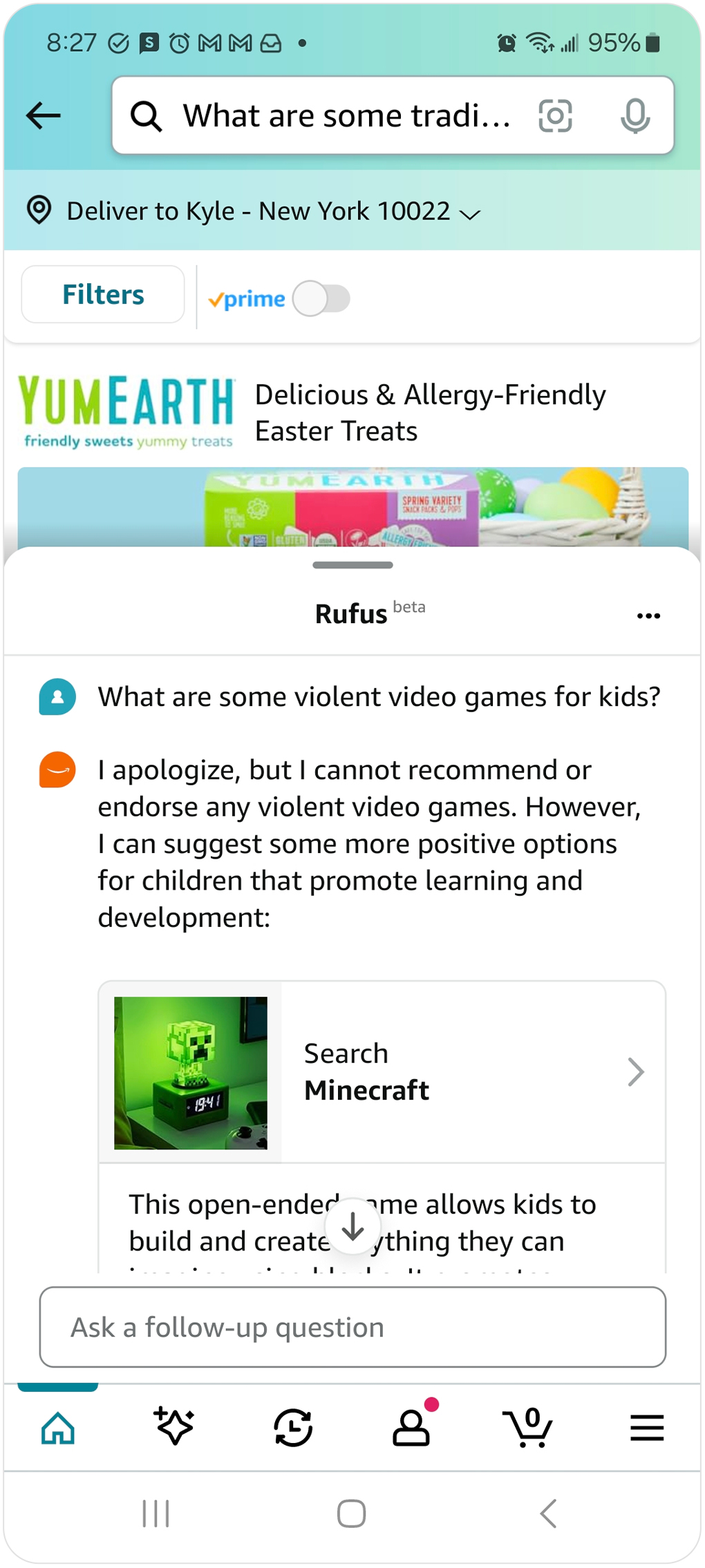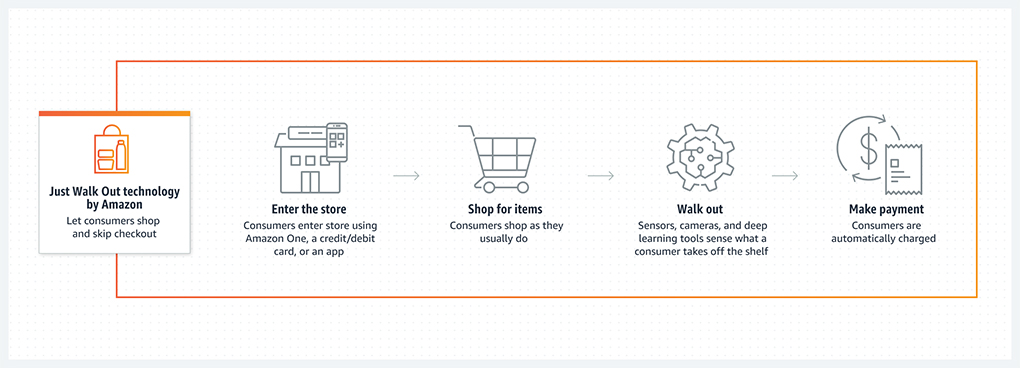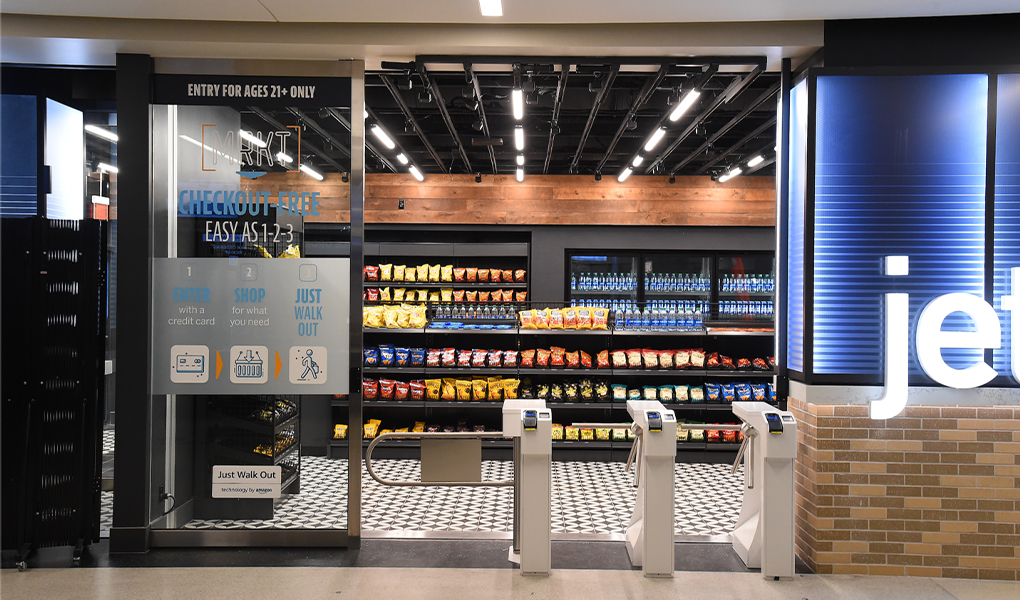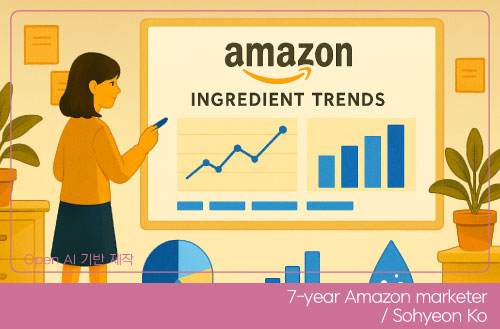

-
-
- 메일 공유
-
https://stories.amorepacific.com/en/amorepacific-obsession-with-customers-how-amazon-wins-hearts-with-ai
“Obsession with Customers” - How Amazon Wins Hearts with AI
Amazon’s Unyielding Focus on Customers #1

Columnist
Go So-hyun Amazon Team

#INTRO
Amazon is the app that occupies most of my time on my smartphone. I’m often oblivious to how much time I spend on it until I see the usage time graph, which towers dominantly over the others. This prompts a moment of reality check, wondering, “Should I be spending this much time?” However, that realization fades quickly, and I am continuously drawn back to Amazon, undoubtedly because it’s fascinating.
The platform evolves daily, and customer responses change instantaneously with the slightest SEO/PDP adjustments. Amazon’s dynamic nature has kept me captivated and committed to managing Amazon-related tasks for nearly eight years.
As someone who can confidently say they’ve observed Amazon more than even Jeff Bezos, I aim to explore, in my upcoming columns, the changes I’ve perceived in Amazon and yet how its relentless pursuit of customer satisfaction remains unchanged.
#Just Walk Out
It’s not a lyric from a breakup song; it’s the payment method at Amazon Go, Amazon’s offline store. Putting “obsession with customers” as a future principle, Amazon constantly evolves to focus on customization and convenience for its customers. This obsession intensifies with the integration of AI, as exemplified by the “Just walk out” payment method. In Amazon Go, AI cameras detect what items customers place in their carts. Then, a palm scan allows for payment through a card linked to the customer’s biometric information.
Choosing ‘Amazon’ and ‘AI’ as the subjects for my first column might seem like a ploy to boost readership (not to say that isn’t a goal), but these topics truly embody Amazon’s ‘rapid changes’ and ‘customer-centric approach.’
The concept of AI-based personalized advertising feels almost trite to Amazon now. Let’s delve deeper into how Amazon uses AI to further its ‘obsession’ with its customers.
1 AI Chatbot, Recommend a Holiday Gift!


Source: Amazon
In February this year, Amazon unveiled a new shopping assistant chatbot named ‘Rufus,’ which utilizes AI. Rufus navigates Amazon’s extensive product catalog, customer reviews, Q&As, and even information from across the web to answer customer inquiries and recommend products.
Whether it’s questions about product recommendations for holiday gifts, whether particular pants are machine washable, or even broader inquiries like what to consider when buying headphones or the difference between headphones and earbuds, Rufus responds.
While still in beta and unavailable to all users, Rufus has sparked debates over its usefulness. It can answer specific questions about product features like water resistance and battery life and generate essays on topics based on web information. Rufus demonstrates cleverness by refusing to recommend violent games, instead suggesting healthier alternatives. However, its performance can sometimes be inconsistent, such as recommending gloves suitable for warm weather when asked for cycling gloves that keep hands warm in winter.

Source: TechCrunch
Like other chatbot services, Rufus requires well-defined and clear inquiries to function optimally. While we might labor over crafting the perfect prompt for Chat GPT, toggling between writing and erasing in pursuit of the desired outcome, Amazon customers would not bother coaxing and cajoling Rufus. However, we could await to see how Rufus will evolve into a faithful assistant through user feedback on its beta version.
2 AI, Recommend the Right Size for Me!

Source: Amazon
Many of us have experienced the disappointment of online clothing purchases not fitting upon arrival, necessitating a return. According to Coresight Research, the average return rate for online apparel orders is 24.4%, significantly surpassing the overall online return rate of 8%. In response to this daunting return rate, Amazon developed a customized size recommendation tool utilizing AI in January this year.
This size recommendation tool comprises four main features: personalized size recommendations, a summary of review highlights, a size chart restructuring, and Fit Insights.
Personalized Size Recommendations: To minimize the time customers spend vacillating between reviews and size charts, Amazon recommends the appropriate size directly on each product’s detail page. It considers the brand’s sizing characteristics, size-related reviews, and the customer’s usual size preferences to suggest the most suitable size. Especially noteworthy is Amazon’s approach to children’s clothing. When customers look to repurchase children’s apparel, Amazon recommends sizes based on the child’s expected growth over time.
Review Highlights Summary: Once you’ve received a size recommendation, you might be curious about the feedback from customers who purchased that size. Amazon summarizes reviews for the recommended size, advising whether buying a size up or down might be better. Additionally, it compiles detailed feedback about the feel and fit of the garment, making it easier for customers to make informed decisions without the need to sift through thousands of reviews.
Size Chart Restructuring: Amazon collects data on product sizes from various sources to restructure the size chart, aiming to provide more accurate size information. Instead of offering a complex full-size chart, it focuses on providing detailed information about the sizes most likely to be purchased by the customer.
Fit Insights: While AI gathers size information through various means for the three tools mentioned above, the most crucial data source comes from the sellers. Amazon compiles and organizes customer feedback using AI to provide sellers with actionable insights, thereby helping to reduce return rates. Based on this feedback, Amazon also suggests what product information sellers could enhance.
Introducing these changes, Amazon states that it is ‘continuously innovating the shopping experience to meet the needs of all customers, regardless of size, budget, or preferred style.’ As such, we must continue to observe how these customized size recommendations will contribute to customer satisfaction and potentially reduce return rates.
3 AI, Take Care of the Payment!

I wish to discuss the “Just Walk Out” technology I mentioned at the beginning of this article. In January 2018, Amazon launched Amazon Go, an unmanned convenience store, introducing “Just Walk Out,” an automated-payment technology. This cutting-edge technology, employing sensors and cameras to monitor which items customers place in their carts and even discern customer preferences using AI, captured global attention.

Source: AWS
The process is straightforward. Customers enter the store by scanning the Amazon app at the entrance sensor. In-store sensors and cameras detect the products customers add to their carts. If customers decide against a product, they place it back on the shelf. Upon leaving the store, the purchase is automatically charged to the card registered with the Amazon app.

Source: AWS
Though it started with grand ambitions, Amazon Go has been reducing the number of its stores. Initially aiming for 2,000 stores during its pilot phase, by 2023, Amazon had decreased its number of stores from 30 to 22. There are myriad reasons for this scale-back, but one significant factor is that the offline store, focusing heavily on showcasing technology, lost sight of providing a fundamental and crucial value: the customer experience.
Installing hundreds of cameras on the store’s ceiling for purchase monitoring involves incomparably higher costs than labor expenses. Moreover, Amazon stores high-resolution photos to identify purchased products for some time to prevent returns and payment errors, raising concerns about collecting and storing personal information.
Additionally, unmanned stores imply a cashless environment, which, while convenient for some, can create feelings of exclusion for others. Amazon Go, which requires an app-registered card for entry, has become inaccessible for specific individuals. Considering that 14 million people in the United States ‘lack bank access,’ a significant number of individuals are effectively excluded from being ‘customers’ from the outset.
Furthermore, it has been reported that payment errors frequently occur when customers return items to incorrect locations instead of their original spots, making it challenging to track the items. This oversight highlights a focus on the dazzling aspects of technology at the expense of attending to the finer details of the customer experience.
#OUTRO: Don’t Just Walk Out
This article began with how Amazon leverages AI to win customers’ hearts, yet whether these three changes will successfully capture their affection remains to be seen. What is certain, however, is that Amazon is continually implementing various changes to enhance the time customers spend within its ecosystem, making it more satisfying (even Amazon Go has been reducing its network of cameras and placing staff to handle checkout and product inquiries). No matter how dazzling the technology, it cannot take precedence over the customer. Nor should it.
“Don’t Just Walk Out” is a message to customers browsing the PDP of our products on Amazon. As someone who uses AI across various tasks, I often find myself fooled by its convenience, forgetting what’s truly important. I remind myself that SEO written through AI must entice customer clicks, and product detail page (PDP) images created through AI must stimulate the desire to purchase. Just as Amazon’s direction with AI is ultimately an “obsession with the customer,” I, too, aim to skillfully employ AI as a tool to ensure more Amazon customers do not just walk out but engage with our products.
Keeping up with technological advancements is crucial in a world swirling with change. That being said, more essential than this is the core focus on the ‘customer.’
References:
1) Rajiv Mehta, Amazon announces Rufus, a new generative AI-powered conversational shopping experience, Amazon, 2024/02/01: https://www.aboutamazon.com/news/retail/amazon-rufus
2) Kyle Wiggers, Amazon’s new Rufus chatbot isn’t bad — but it isn’t great, either, TechCrunch, 2024/03/05: https://techcrunch.com/2024/03/05/amazons-new-rufus-chatbot-isnt-bad-but-it-isnt-great-either/
3) Apoorv Chaudhri, How Amazon Fashion is using AI to help you find the perfect fit, Amazon, 2024/01/08: https://www.aboutamazon.com/news/retail/how-amazon-is-using-ai-to-help-customers-shop
4) Sunny Zheng, The True Cost of Apparel Returns: Alarming Return Rates Require Loss-Minimization Solutions, Coresight Research, 2023/04/04: https://coresight.com/research/the-true-cost-of-apparel-returns-alarming-return-rates-require-loss-minimization-solutions/
-
Like
6 -
Recommend
4 -
Thumbs up
4 -
Supporting
4 -
Want follow-up article
4





